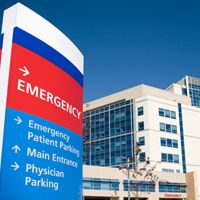Article
How Many Emergency Department Visits Are Due to Adverse Events from Psychiatric Medications?
Author(s):
Adverse drug events involving psychiatric medications are not uncommon in emergency departments, according to a study published in JAMA Psychiatry.

Psychiatric medications are the cause of a significant number of adverse drug events (ADEs) treated in US emergency department (ED) visits, according to a paper published in JAMA Psychiatry.
Researchers from the Centers for Disease Control and Prevention (CDC) and Johns Hopkins Bloomberg School of Public Health studied psychiatric ADEs in EDs in adult patients exposed to antidepressants, antipsychotics, lithium salts, sedatives and anxiolytics, and stimulants from January 1, 2009 to December 31, 2011. Data was collected from the nationally representative National Electronic Injury Surveillance System—Cooperative Adverse Drug Event Surveillance system – incorporating 63 hospitals – as well as the National Ambulatory Medical Care and National Hospital Ambulatory Medical Care surveys.
Of an estimated 89,094 psychiatric medication ADE ED visits annually, 19.3 percent resulted in hospitalization. About half (49.4 percent) involved patients between the age of 19 to 44 years.
The researchers found the following drugs implicated in ADE ED visits annually:
- Sedatives and anxiolytics: 30,707
- Antidepressants: 25,377
- Antipsychotics: 21,578
- Lithium salts: 3,620
- Stimulants: 2,779
Among these drugs, the implications for ADE ED visits per 10,000 outpatient prescription visits were:
- Sedatives and anxiolytics: 3.6
- Antidepressants: 2.4
- Antipsychotics: 11.7
- Lithium salts: 16.4
- Stimulants: 2.9
“These findings provide the first detailed estimates of the annual number of adult emergency department visits due to adverse effects from therapeutic use of antipsychotics, antidepressants, lithium salts, stimulants, and sedatives and anxiolytics,” lead author Lee Hampton, MD, MSc, a medical officer with the Division of Healthcare Quality Promotion at the CDC, said in an interview with Psychiatric News. “Antipsychotics caused three times more ED visits for adverse drug events than sedatives and almost 5 times more ED visits than antidepressants.”
The researchers noted the commonly used sedative zolpidem tartrate (Ambien) was implicated in 11.5 percent of all adult psychiatric medication ADE ED visits as well as 21 percent of visits involving older adults (aged 65 years or older). For both of these scenarios, the researchers noted these statistics were higher than any other psychiatric medication.
“Efforts to reduce ADEs should include adults of all ages but might prioritize medications causing high numbers and rates of ED visits,” the authors concluded.





